The Unsung Heroes: Mastering the Art of Left-Back Footballers Play in Modern Football

Ever noticed that player who seems to be everywhere on the left side of the pitch? Sprinting back to make a crucial tackle one minute, then bombing forward to deliver a pinpoint cross the next? That’s the left-back – football’s ultimate utility player. While strikers grab headlines and midfielders often claim the spotlight, left-backs silently influence games in ways that only the most tactically astute observers fully appreciate.
In today’s game, the left-back position has evolved dramatically from its defensive origins to become one of the most demanding and dynamic roles on the field. Whether you’re a coach, player, or simply a football enthusiast looking to deepen your understanding of the game, this comprehensive guide will explore everything you need to know about this fascinating position.
Table of Contents
What is a Left-Back?
A left-back (LB) is a defensive player positioned on the left side of a team’s backline. Traditionally part of a back four, the left-back primarily defends the left flank but in modern football has substantial attacking responsibilities as well.
The position requires a unique blend of defensive discipline and attacking flair. When the team is defending, the left-back must maintain defensive shape, track opposing wingers, and prevent crosses. When attacking, they provide width, overlapping runs, and dangerous deliveries into the box.
In certain formations, particularly those with three center-backs, the left-back position transforms into a left wing-back role, with even greater emphasis on attacking contribution and covering the entire left flank from defense to attack.
Responsibilities of a Left-Back
Defending

One-on-one defending techniques The left-back frequently faces isolation against skilled wingers, requiring excellent one-on-one defending. Key techniques include:
- Jockeying position, staying side-on to guide attackers away from dangerous areas
- Maintaining proper distance to prevent being easily beaten
- Timing challenges to win the ball without committing fouls
Tackling Successful left-backs master various tackling techniques:
- Standing tackles to dispossess opponents while remaining upright
- Block tackles to prevent shots or crosses
- Sliding tackles as a last resort, requiring perfect timing
- Recovery tackles when tracking back at high speed
Positioning and awareness Elite left-backs demonstrate exceptional positioning through:
- Maintaining proper distances from center-backs
- Adjusting position based on the ball’s location
- Awareness of space behind them
- Reading attacking patterns to anticipate danger
Marking opponents Left-backs must effectively neutralize threats through:
- Close marking in dangerous areas
- Zonal marking when defending as a unit
- Tracking runners making diagonal movements
- Communicating with teammates about switches or overlaps
Dealing with crosses When defending crosses, left-backs must:
- Block crosses at source when possible
- Position themselves at the back post when crosses come from opposite flank
- Clear effectively under pressure
- Coordinate with center-backs to cover zones
Attacking
Overlapping runs The modern left-back creates attacking overloads through:
- Well-timed overlapping runs beyond the winger
- Underlapping runs through inside channels
- Creating 2v1 situations against opposing defenders
- Providing width to stretch defenses
Crossing ability Elite left-backs deliver various crosses:
| Type of Cross | Best Situation to Use | Key Technique |
|---|---|---|
| Early cross | When strikers make early runs | Hit with pace before defense sets |
| Cut-back | When reaching byline | Pull back to penalty spot or edge of box |
| Whipped cross | When attackers attack far post | Curved trajectory with pace |
| Floated cross | For tall strikers against deep defense | Hang time allowing attackers to attack ball |
Passing range and accuracy Modern left-backs need comprehensive passing ability:
- Short combination play with wingers and midfielders
- Medium-range passes to switch play
- Long diagonal passes to opposite wingers
- Progressive passes that break defensive lines
Supporting the attack Beyond direct involvement, left-backs support attacks by:
- Maintaining width to stretch defenses
- Recycling possession when attacks break down
- Providing safe passing options
- Sustaining pressure through intelligent positioning
Set Pieces

Defending set pieces Left-backs typically have specific set-piece responsibilities:
- Marking zones at the near post
- Picking up specific opposition targets
- Covering the back post area
- Being positioned for counter-attacks
Attacking set pieces While not primary targets, left-backs contribute to attacking set pieces through:
- Near-post runs to create space
- Positioning for rebounds
- Short-corner routines
- Staying back as counter-attack security
Skills and Attributes of a Top Left-Back
Technical Skills
Dribbling Left-backs increasingly need strong dribbling abilities to:
- Beat pressing attackers when building from the back
- Create space for crosses
- Progress the ball up the field
- Maintain possession under pressure
Passing Elite left-backs demonstrate diverse passing abilities:
- Short combination play in tight spaces
- Long switches of play
- Progressive passes between defensive lines
- First-time passes to maintain attacking momentum
Crossing Perhaps the most distinctive technical skill for attacking left-backs:
- Varied delivery types (driven, floated, cut-backs)
- Accuracy to find targets in congested areas
- Ability to cross while running at speed
- Using different parts of the foot for different crosses
Tackling Fundamental defensive techniques include:
- Clean, well-timed challenges
- Ability to win the ball without fouling
- Recovery tackles when beaten
- Strength in 50-50 challenges
Physical Attributes

Speed Critical for modern left-backs to:
- Track fast wingers
- Make recovery runs
- Exploit space when attacking
- Cover ground during transitions
Agility Enables left-backs to:
- Change direction quickly
- React to skillful wingers
- Adjust body position when defending
- Navigate tight spaces when dribbling
Stamina Perhaps the most demanding position physically, requiring:
- Covering extensive ground each match
- Maintaining intensity for 90+ minutes
- Repeated high-intensity sprints
- Quick recovery between attacking and defensive phases
Strength Modern left-backs need strength to:
- Hold off attackers in physical duels
- Win aerial challenges
- Shield the ball when in possession
- Compete in set-piece situations
Mental Attributes

Decision-making Elite left-backs constantly balance:
- When to tackle vs. when to contain
- When to overlap vs. when to maintain position
- Risk vs. security in possession
- Defensive positioning vs. attacking opportunity
Concentration Left-backs must maintain focus through:
- Long periods without direct involvement
- Quick transitions from attack to defense
- Managing fatigue in later game stages
- Remaining alert to diagonal threats
Communication Essential for coordinating with:
- Center-backs regarding defensive positioning
- Wingers for attacking combinations
- Midfielders for pressing triggers
- The entire backline for maintaining shape
Leadership While not always captains, top left-backs lead through:
- Organizing defensive shape
- Setting pressing intensity
- Encouraging teammates
- Taking responsibility in crucial moments
Tactical Role of a Left-Back
Different Formations
4-4-2 / 4-3-3 In traditional back four systems, the left-back:
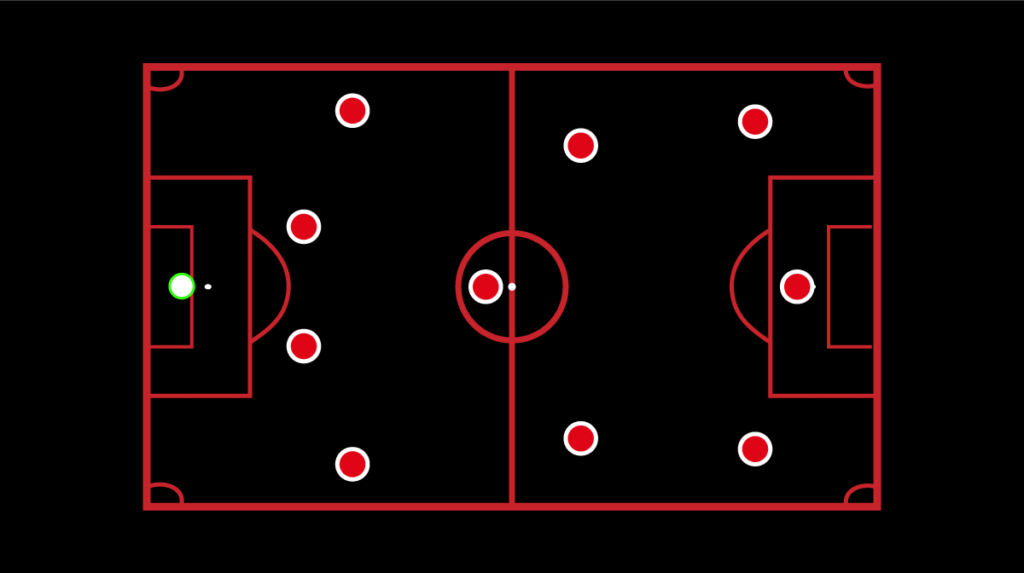
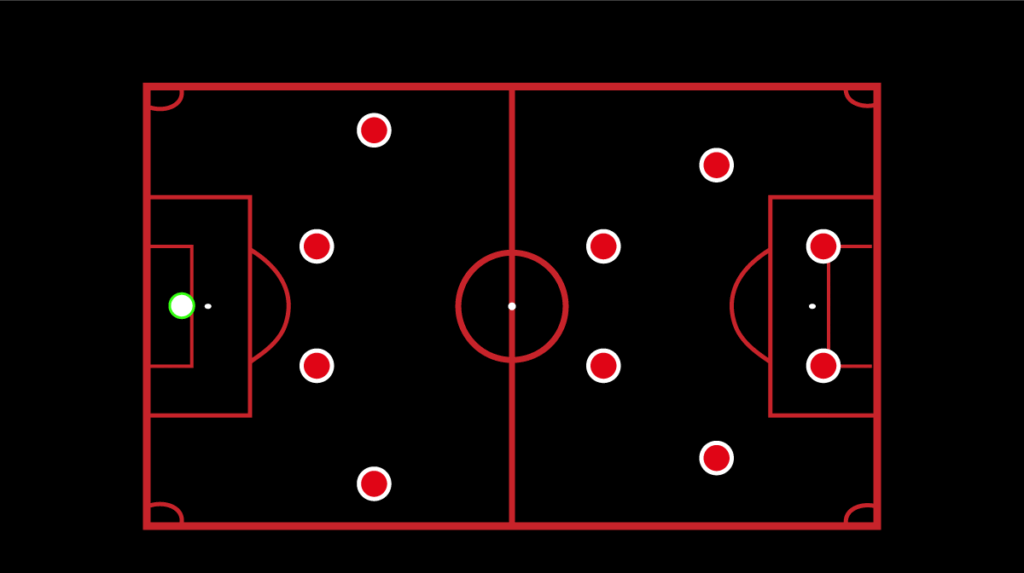
- Balances defensive solidity with attacking support
- Coordinates closely with the left-sided midfielder
- Provides width in attack
- Covers the channel between center-back and winger
3-5-2 / 3-4-3 In these systems, the role transforms into a wing-back position:
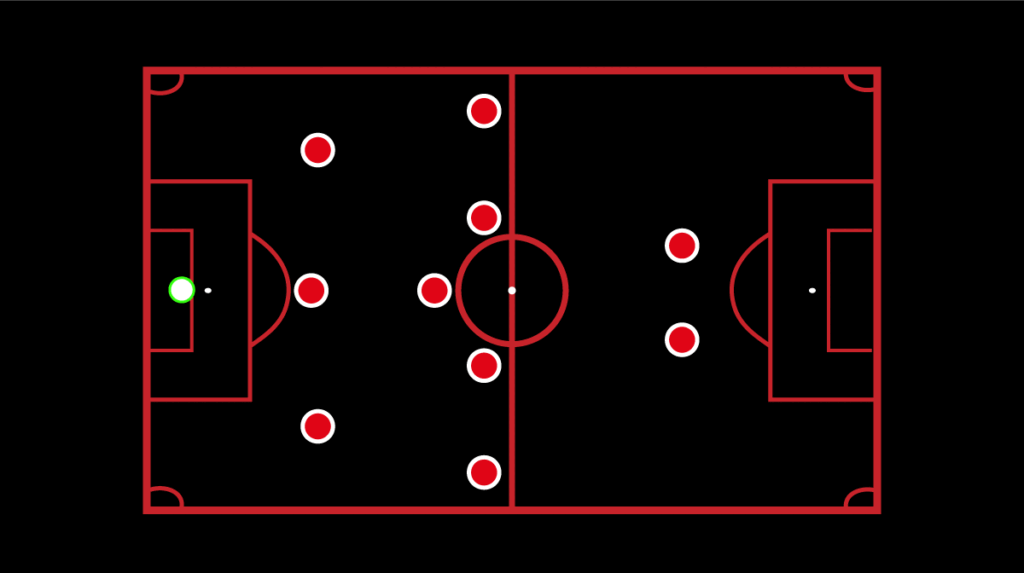
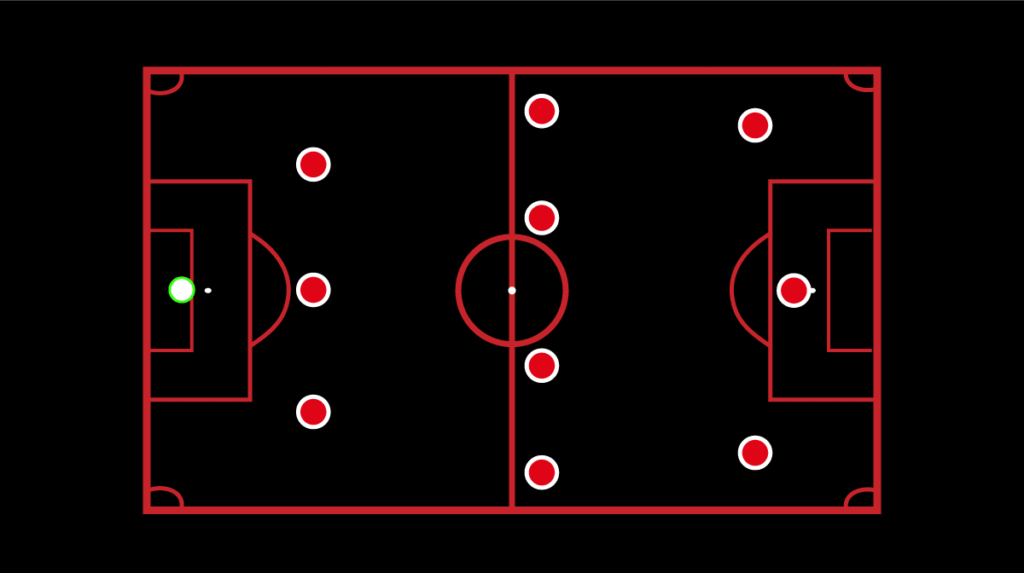
- Greater attacking emphasis
- Responsible for entire left flank
- More advanced average position
- More crossing opportunities
5-3-2 (Defensive) In more defensive setups:
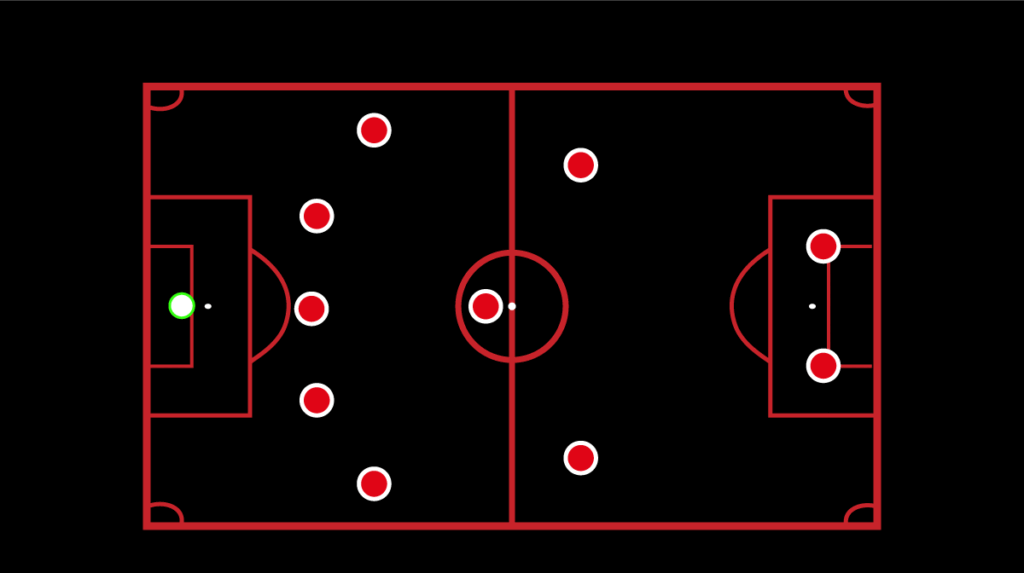
- Primary focus on defensive stability
- Less frequent attacking involvement
- Narrower positioning to support center-backs
- Emphasis on clearing danger and safe possession
Playing Styles
Attacking full-back Players like Marcelo and Roberto Carlos exemplify this style:
- Significant contribution to build-up play
- Regular overlapping runs
- High positioning up the field
- Emphasis on crossing and chance creation
Defensive full-back Players like Paolo Maldini prioritize:
- Positional discipline
- Minimal defensive errors
- Conservative positioning
- Safe possession play
Balanced modern left-back Today’s elite left-backs like Andrew Robertson demonstrate:
- Equal comfort defending and attacking
- Situational awareness to adjust their role
- Tactical intelligence to know when to attack or defend
- Technical ability to influence all phases of play
Relationship with the Left Midfielder/Winger
The left-back/winger relationship requires complex coordination:
- Understanding when to overlap vs. when to underlap
- Creating space through movement
- Defensive cover when the other attacks
- Quick combinations to break pressure
Pressing and Counter-Pressing

Modern left-backs participate actively in pressing through:
- Triggering wide presses against opposition build-up
- Stepping forward to compress space
- Counter-pressing immediately after loss in attacking areas
- Blocking passing lanes during defensive transitions
Training Drills and Tips for Left-Backs
Individual Drills
Footwork
- Ladder drills emphasizing lateral movement
- Cone work focused on quick changes of direction
- Shadow defending against imaginary wingers
- Reaction drills with coach signals
Crossing
- Target practice at various distances
- Crossing while running at different speeds
- First-time crossing after receiving passes
- Crossing under pressure from defenders
Tackling
- Properly timed sliding tackles on dummy targets
- Block tackling technique development
- Controlled one-on-one defending situations
- Recovery tackle scenarios
Small-Sided Games
1v1 Defending
- Channel games with attacker trying to beat defender
- Points for successful tackles or forcing out of bounds
- Varying starting positions to simulate game situations
- Adding recovery runs to increase difficulty
2v2 Combination Play
- Left-back and winger against two defenders
- Emphasizing combinations and overlaps
- Creating crossing opportunities
- Transition to defense when possession is lost
Team-Based Drills
Overlapping Runs
- Pattern play with midfielders, wingers, and left-backs
- Timing runs to receive in advanced positions
- Creating crossing opportunities through combinations
- Finishing phases with proper box positioning
Defensive Shape
- Back four movement drills following coach signals
- Shifting and covering exercises with full defensive unit
- Recovery positioning after attacks break down
- Defending crosses from opposite side
Famous Left-Back Footballers
Paolo Maldini (Italy)
Regarded by many as the greatest defender ever, Maldini’s 25-year career at AC Milan showcased the perfect defensive left-back. His impeccable positioning meant he rarely needed to make last-ditch tackles, famously stating, “If I have to make a tackle, I’ve already made a mistake.”

Key Attributes:
- Exceptional positioning
- Reading of the game
- Tactical intelligence
- Leadership
- Longevity
Roberto Carlos (Brazil)
The Brazilian redefined attacking potential from the left-back position with his incredible overlapping runs and thunderous shooting ability. His physics-defying free kick against France in 1997 remains one of football’s most iconic moments.
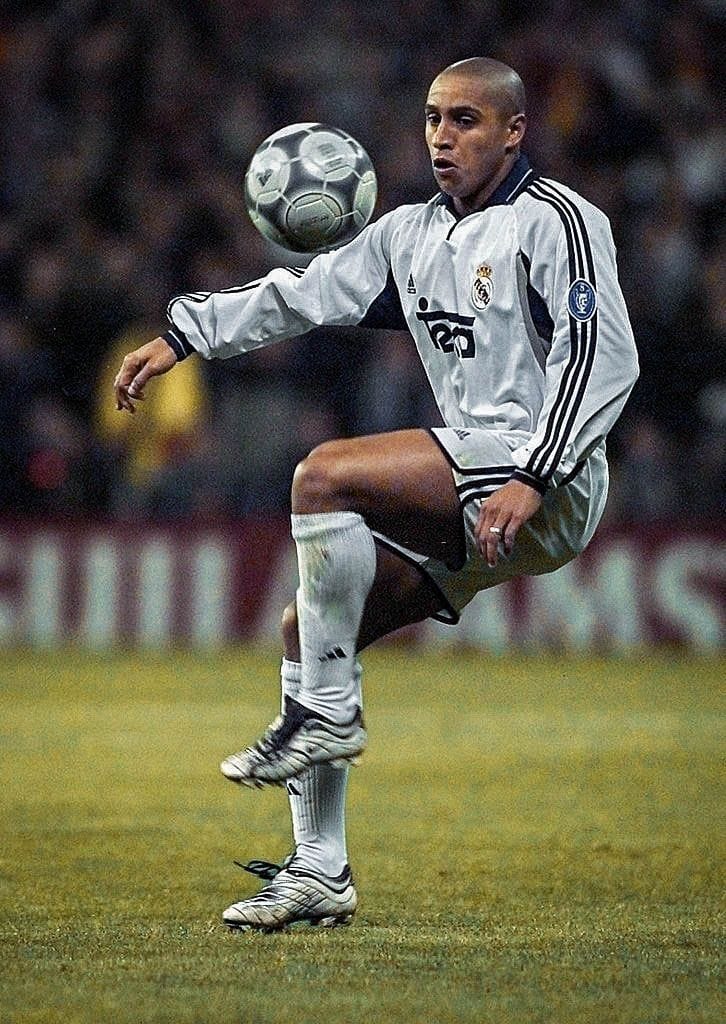
Key Attributes:
- Explosive pace
- Tremendous shooting power
- Attacking mentality
- Crossing ability
- Free kick specialization
Ashley Cole (England)
Perhaps England’s greatest left-back, Cole combined defensive reliability with attacking threat. His one-on-one defending against the world’s best wingers set him apart during his prime at Arsenal and Chelsea.
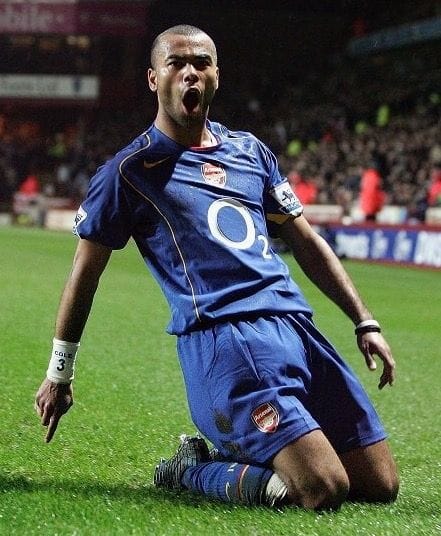
Key Attributes:
- One-on-one defending
- Recovery pace
- Positional awareness
- Supporting attacks
- Consistency
Marcelo (Brazil)
The modern attacking left-back prototype, Marcelo’s creative flair and technical ability made him integral to Real Madrid’s four Champions League victories. Often functioning almost as an additional midfielder, his ability to combine with attackers was unmatched.

Key Attributes:
- Technical skill
- Dribbling ability
- Creative passing
- Attacking contribution
- Combination play
The Future of the Left-Back Position
The left-back role continues to evolve, with several trends defining its future:
Increased Technical Demands Modern left-backs are increasingly involved in build-up play, requiring greater technical proficiency and comfort in possession. The ability to play through pressure and contribute to possession is now essential.
Positional Fluidity The distinction between left-back and left wing-back is blurring, with many players now expected to fulfill both roles, sometimes within the same match as formations shift. Tactical flexibility is increasingly valuable.
Inverted Full-Backs Pioneered by Pep Guardiola, some teams now employ left-backs who move into central midfield positions when in possession, creating numerical advantages in build-up and allowing more natural attackers to maintain width.
Data-Driven Development Advanced metrics now track progressive carries, expected threat from crosses, and defensive coverage, allowing for more specialized training and tactical adjustments for left-backs.
Conclusion
The left-back position exemplifies modern football’s evolution – from purely defensive specialists to complete players influencing all phases of play. Today’s elite left-backs combine defensive solidity, attacking threat, physical endurance, and tactical intelligence.
Whether you’re a coach developing the next generation of defenders, a player looking to improve in this position, or a fan seeking a deeper appreciation of the game, understanding the nuances of the left-back role reveals much about football’s beautiful complexity.
The next time you watch a match, pay special attention to those unsung heroes on the left side of defense. You might just gain a new appreciation for one of football’s most demanding and dynamic positions.